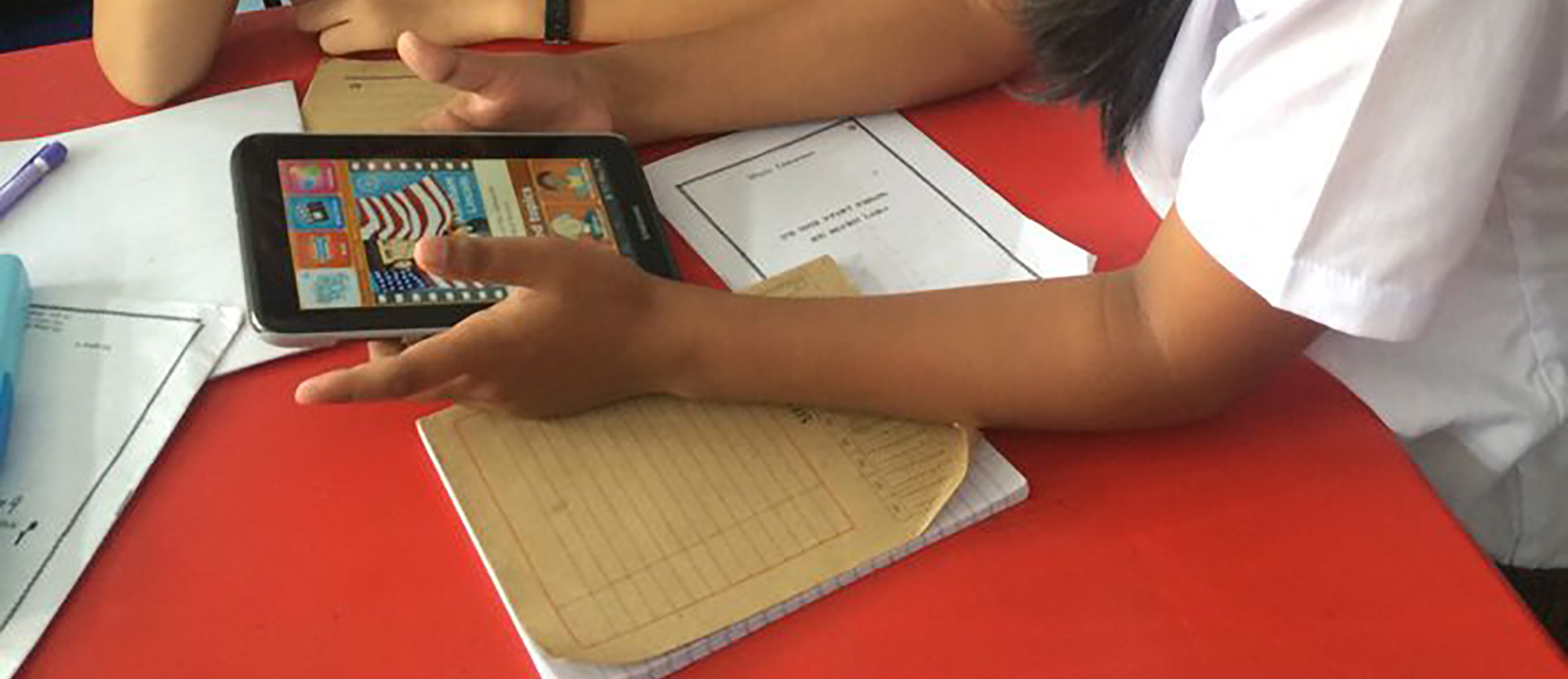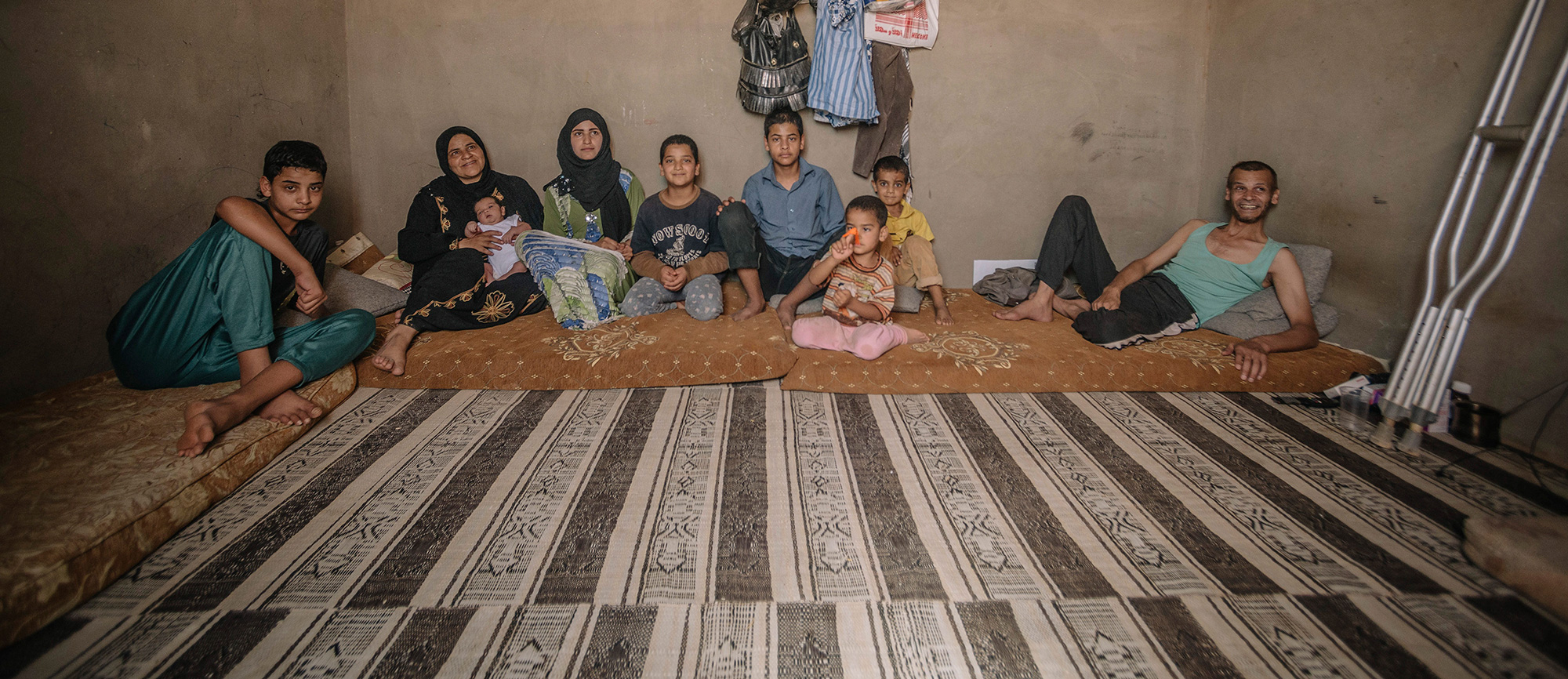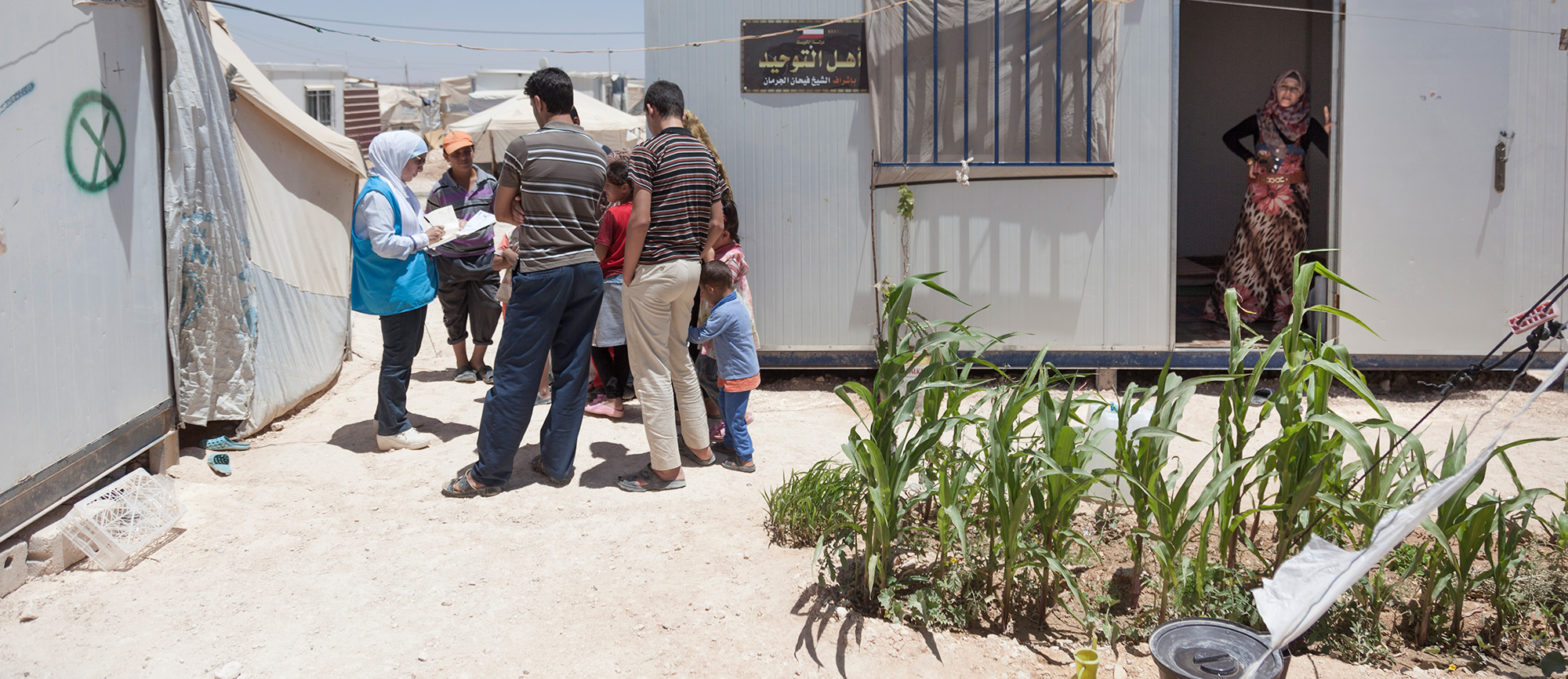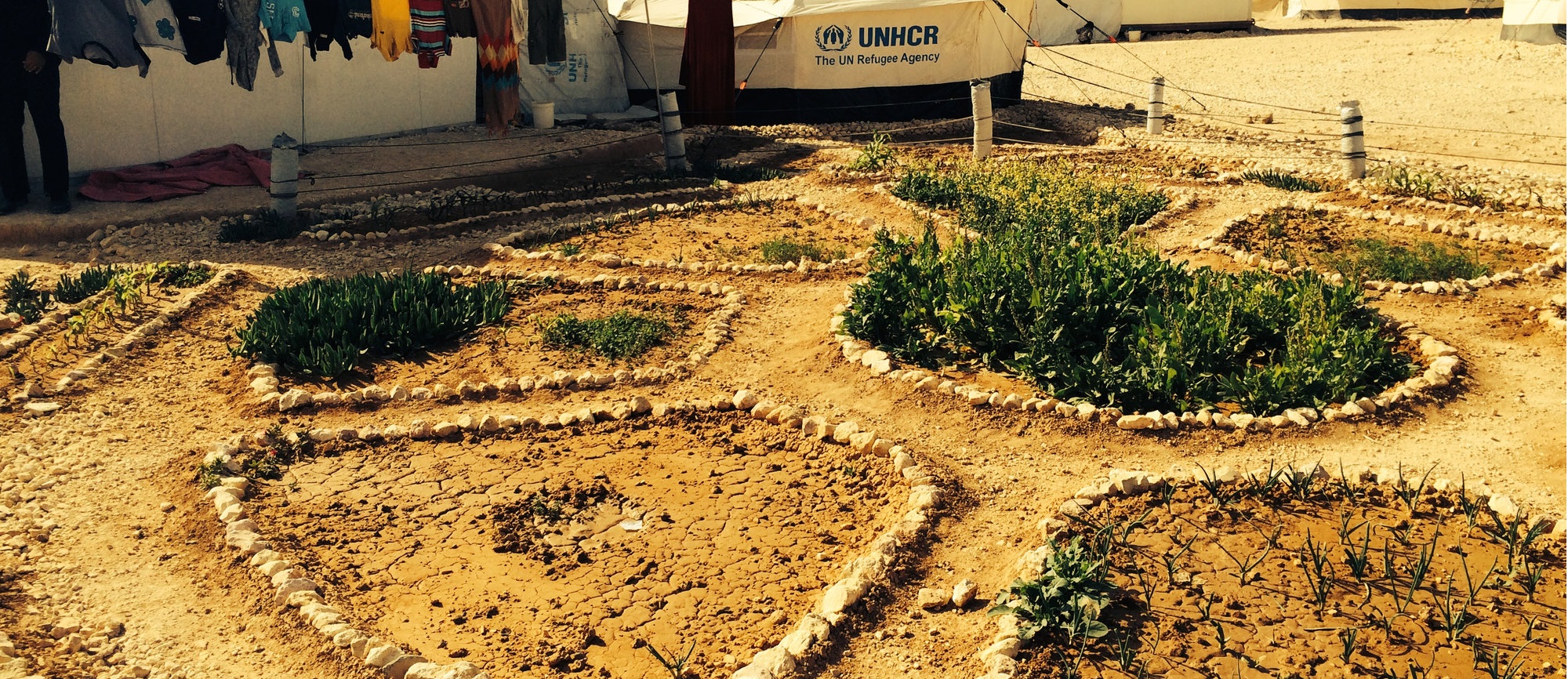1. Define challenges
Increasing access to learning resources
Education tops the list of priorities for refugee communities; in UNHCR surveys, many parents and children call it the “key” to their future. Conditions in camps, however, have made it challenging to provide ample learning opportunities to children.
According to a 2011 study commissioned by UNHCR, “refugee education is generally of a very low quality.” Factors cited include a dearth of fully trained teachers and a lack of learning materials.
The problem of limited learning materials lies in a number of factors. Expensive, complicated and time-consuming procedures have long restricted the supply of these resources. Also, transporting and storing large volumes of learning materials can be challenging as camps constantly deal with damaging physical elements like rain, humidity and the presence of sand.
Many teachers serving refugees lack training. In some locations, teachers have received as little as 10 days of training.
And not all refugee children can go to school. In Malaysia, for instance, less than half of them — approximately 6,000 — are attending community schools, almost all of them at the primary level.
As part of its Education Strategy 2012-2016, UNHCR looks to leverage information and communications technologies to improve learning outcomes of school children in refugee camps. The biggest challenge for the agency is to do so without overstretching its limited funds.
2. Identify solutions
Facilitating access to digital learning content
UNHCR decided to explore the use of tablets and other gadgets to expand access for refugee students to digital learning materials.
Children may benefit greatly from tablets that are preloaded with educational videos and play-based learning apps. Apart from being small, tablets are lighter than most paperback books and are therefore relatively easier to transport. They also require less storage space, and thus are subjected to fewer environmental risks, than would be needed for an equivalent number of books.
In 2013, UNHCR Innovation elected Malaysia to test out tablets as a way to increase refugees’ access to books and other reading materials. Two refugee learning centers located in urban areas — Kachin Refugee Learning Center in Setapak and Kachin Refugee Learning Center in Bukit Bintang — were chosen for the pilot project.
The goal was to enhance student performance by complementing existing curricula with dynamic learning content and supplemental reading materials — and to reduce the net cost of purchasing and distribution.
UNHCR partnered with BrainPOP, a leading provider of digitized educational content and programs. BrainPOP boasts more than 1,000 cross-curricular movies and related quizzes, learning games and an array of lesson ideas and supporting resources for educators.
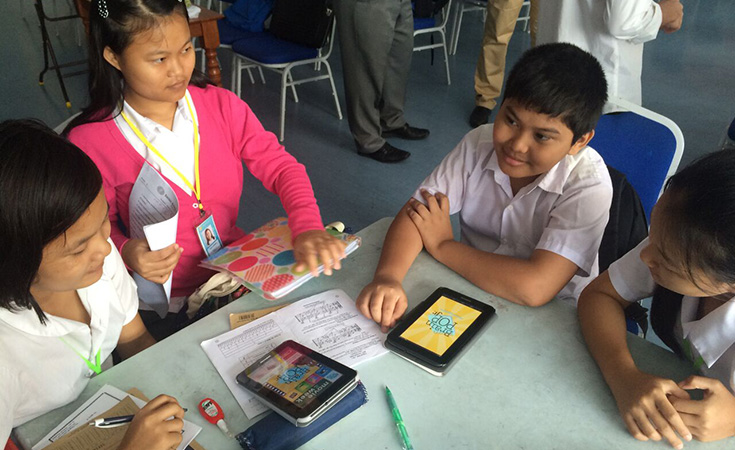
Students at Kachin Refugee Learning Center test the tablets as a way to increase their access to education material.
3. Test solutions
Preloading tablets with educational content that can address specific needs of primary schools
The tablet project was initiated in September 2013 by UNHCR Malaysia’s education unit and the Kachin Refugee Committee’s education unit.
UNHCR assumed responsibility for overall content acquisition, tablets distribution, training as well as monitoring and evaluation. The Kachin Refugee Committee Education Unit, meanwhile, agreed to manage day-to-day activities.
A Tablet Project Committee was formed to support the project at the community level and serve as the point of contact between UNHCR, the two schools and refugee community. The committee, which includes teachers and parents, provided valuable feedback on a variety of matters, including ways to train teachers in technology-related lesson planning.
Schools were provided kits containing 20 Samsung Galaxy Tabs that were previously procured and loaded with locally sourced books, including content from the official school curriculum, as well as international reading materials.
The tablets also feature apps by BrainPOP and others covering topics such as health, engineering and technology as well as English, math and social sciences.
Throughout the first half of 2014, students and teachers used the tablets with great enthusiasm, but they also grew increasingly frustrated dealing with the slow Internet speed of 128kbps. Student performance on standardized tests showed mixed results: Some students improved in their mid-year examination, while others did worse than before. There was no clear evidence on whether the tablets had helped to increase academic performance. And while the two schools spent less on procuring reading materials, overall project costs made up more than those savings.

4. Refine solutions
Reviewing program strengths and weaknesses
UNHCR continued to monitor and support both schools’ efforts to enhance student performance using tablets. By the end of 2014, the agency still saw mixed results. However, it observed an increase in student engagement and participation in class. Students were excited to learn lessons using the tablets, and they expressed their enjoyment in navigating through the apps by themselves.
Some teachers, meanwhile, began to use a projector to engage all students simultaneously in the same learning app. This proved a great way to reduce bandwidth, as well, and the use of projectors has been increasing as devices were donated by volunteer teachers and others.
UNHCR and its partners continue to identify ways to improve the curriculum and proactively increase collaboration with refugees and other stakeholders through regularly engaging in a dialogue. This interaction has helped to determine content gaps and opportunities for new partnerships. It also led to new efforts to advance professional development of teachers using multimedia training, advancing UNHCR’s goal to create a resource guide on teacher training using ICT.

5. Scale solutions
Continuing to test the use of tablets and apps to enhance learning
There was a clear sense of pride from the Kachin community when the tablet project was first announced. The engagement of parents, teachers and others in the Tablet Project Committee helped to secure buy-in from various stakeholders.
From July 2014 onwards, though, UNHCR saw decreased participation from the original TPC members.
Several programs suggested by the committee to involve refugees in tablet-based after-school programs did not go through. Part of the reason may be the cost of Internet access: The Kachin learning centers have very limited Internet quotas to spare and could not extend access for an after-school program.
In fact, without support, the two learning centers are unable to bear Internet costs related to the tablet project. That is why UNHCR continues to support both schools through training, troubleshooting, fundraising, and other services.
And yet, the use of BrainPOP and other apps has shown some promise and deserves further testing. To that end, UNHCR began to use apps from BrainPOP and others in a series of Instant Network Schools set up across Africa with the help of the Vodafone Foundation. The first of these opened 2014 in Dadaab, the world’s largest refugee camp, where only half of all school-aged children receive an education. Huawei donated 235 Internet-enabled tablets for students at 13 participating schools and vocational training institutions; Vodafone’s country affiliate, Safaricom, provided Web connectivity.
UNHCR continues to increase the number of ICT centers and mobile units under its e-learning initiative, as well as build and expand networks of local and international partners. The agency also seeks to promote regular exchanges between ICT-for-education partners. Its partnership with BrainPOP as part of the tablet project is an important step in that direction.
